Photo: Great Lakes Water Authority, 2022
The Southeast Michigan Communicators Network kicked off 2023 with a virtual meeting on January 26. With three dozen local government leaders and communicators in attendance, Michelle Zdrodowski, Chief Public Affairs officer for the Great Lakes Water Authority (GLWA), provided the featured presentation: Communicating in a Crisis.
Great Lakes Water Authority (GLWA) Presents on Crisis Communications
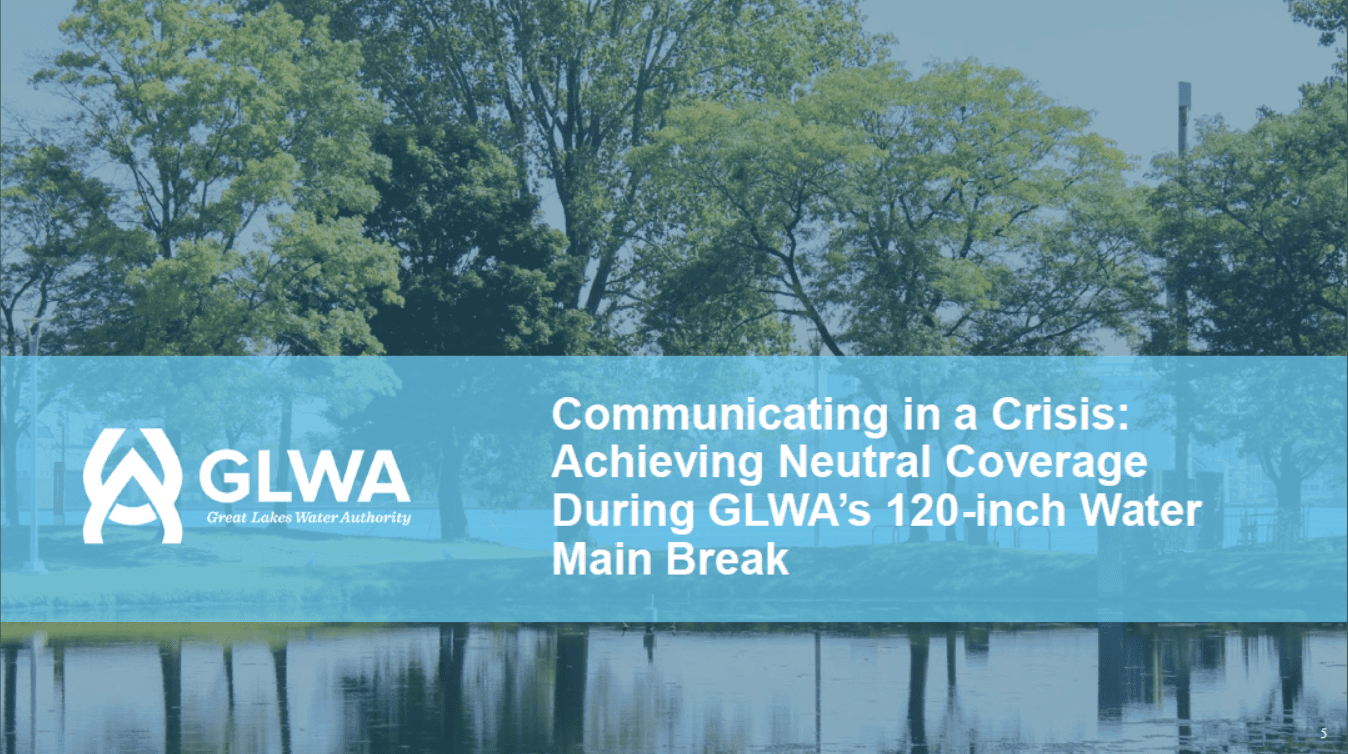
As Southeast Michigan’s largest water provider, GLWA delivers drinking water to nearly 40 percent of Michigan’s population. While operating one of the largest wastewater treatment facilities in the country, GLWA also provides effective and efficient wastewater services to nearly 30 percent of the state’s population. Combine a system of that scale with what we know about the broader condition of underground infrastructure ($ billions more of annual investment are needed to bring our region’s systems to a state of “good” repair), and what happens? Everyone once in a while, something breaks. Fortunately, GLWA has the expertise and capacity to engage in a crisis response when needed.
Michelle, who has led GLWA’s communications efforts since GLWA was founded in 2016, shared the story of how GLWA managed the narrative through their most recent crisis, the rupture of a 120-inch (12 feet!) water main. On August 13, 2022, nearly a million people were impacted when one of GLWA’s largest water mains (they don’t have any that are bigger) essentially exploded, creating a loss of water pressure and necessitating an immediate boil water advisory in 23 communities. Little did anyone know at that time that it would be 48 days before the fix was completed.
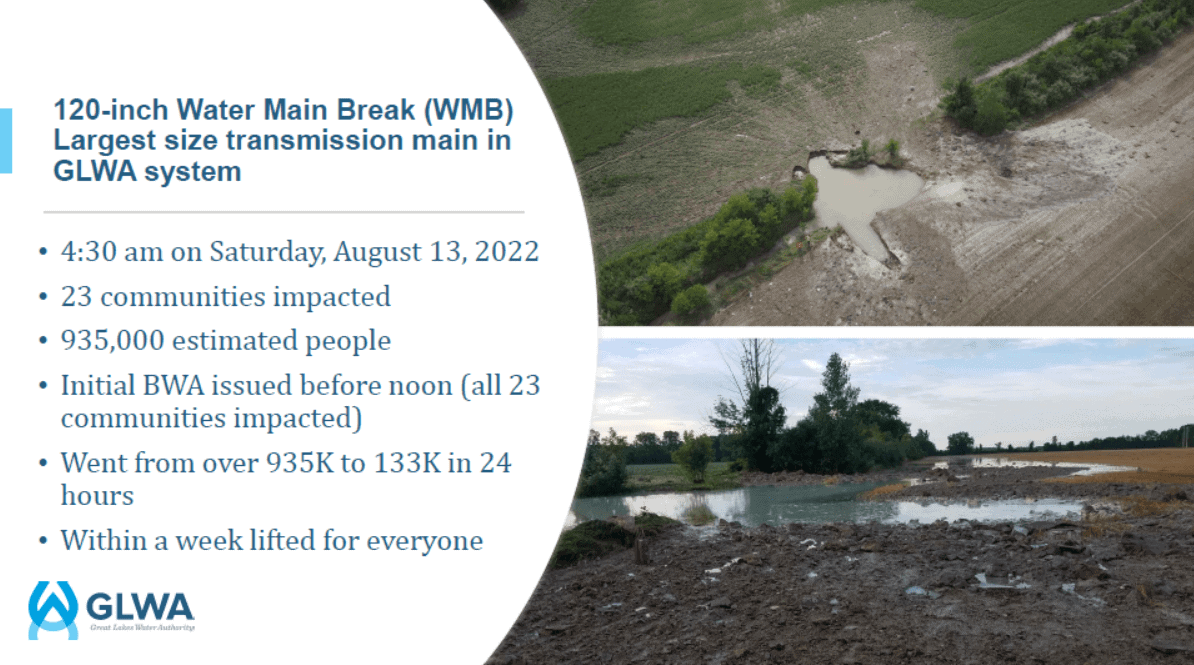
GLWA’s efforts over the ensuing weeks are instructive in navigating a crisis and as a model for quickly and effectively sharing key information with key stakeholders, including the media. Upon discovery of the break on August 13, 2022, an immediate cautionary boil water advisory was issued for all 23 communities, but it was lifted for all but seven communities after 24 hours. Within a week, this advisory was completely lifted. Over the 48 days it took to fix the 120-inch break, GLWA was the lead communicator of updates to those impacted. The crisis also received national attention.
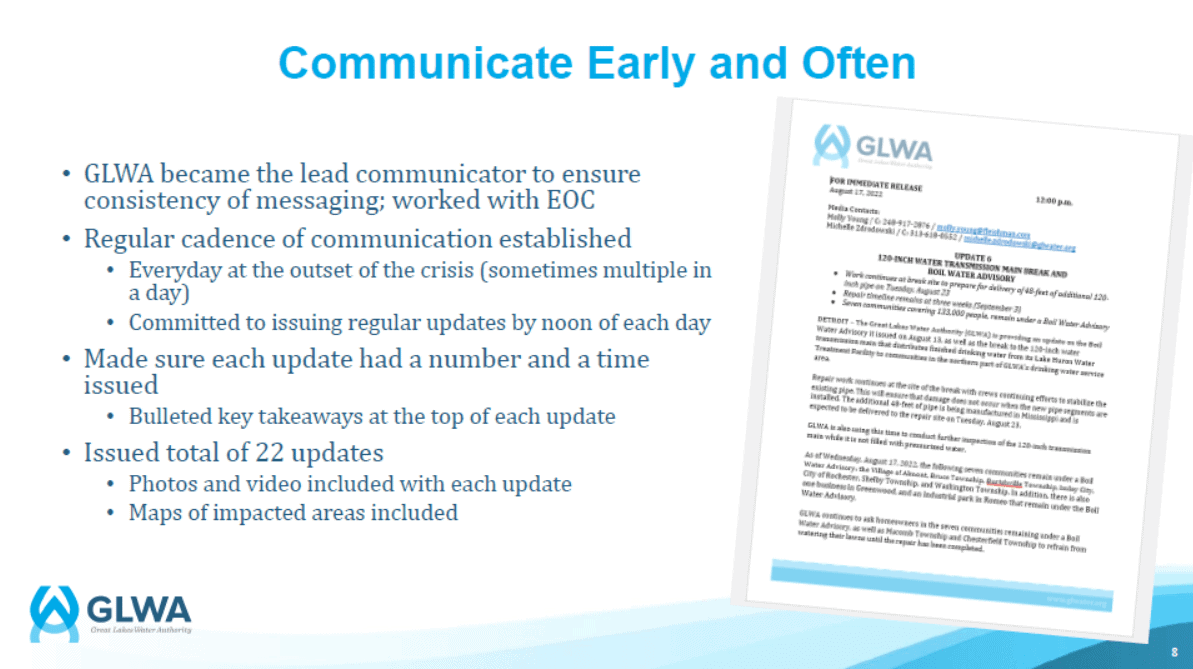
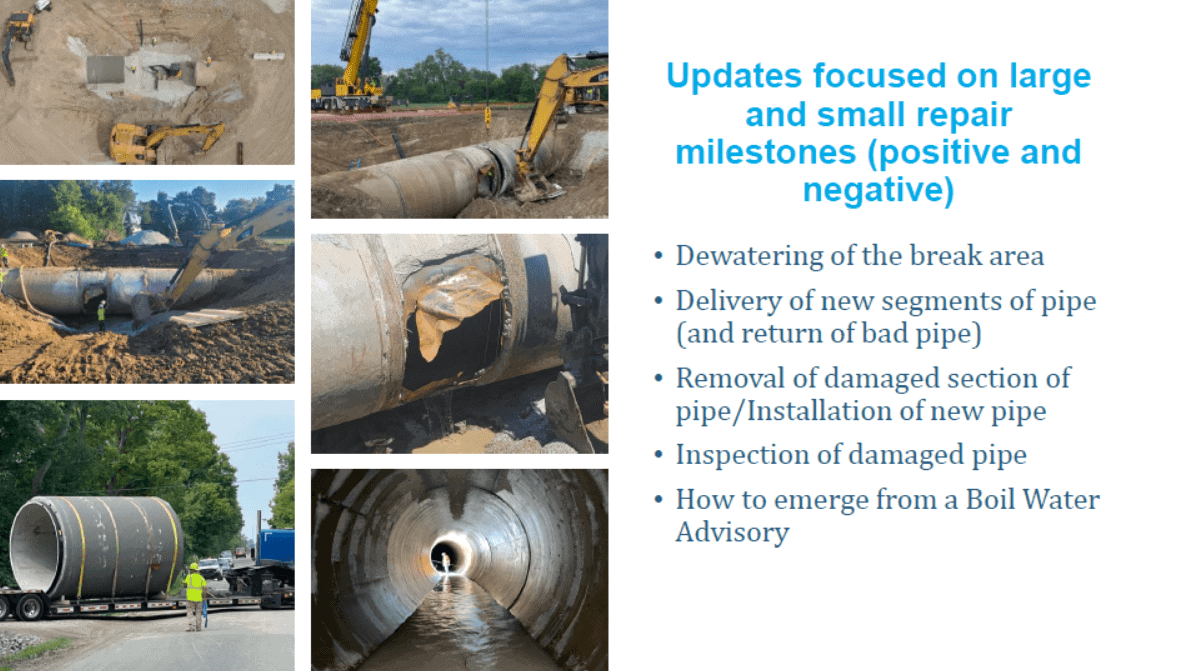
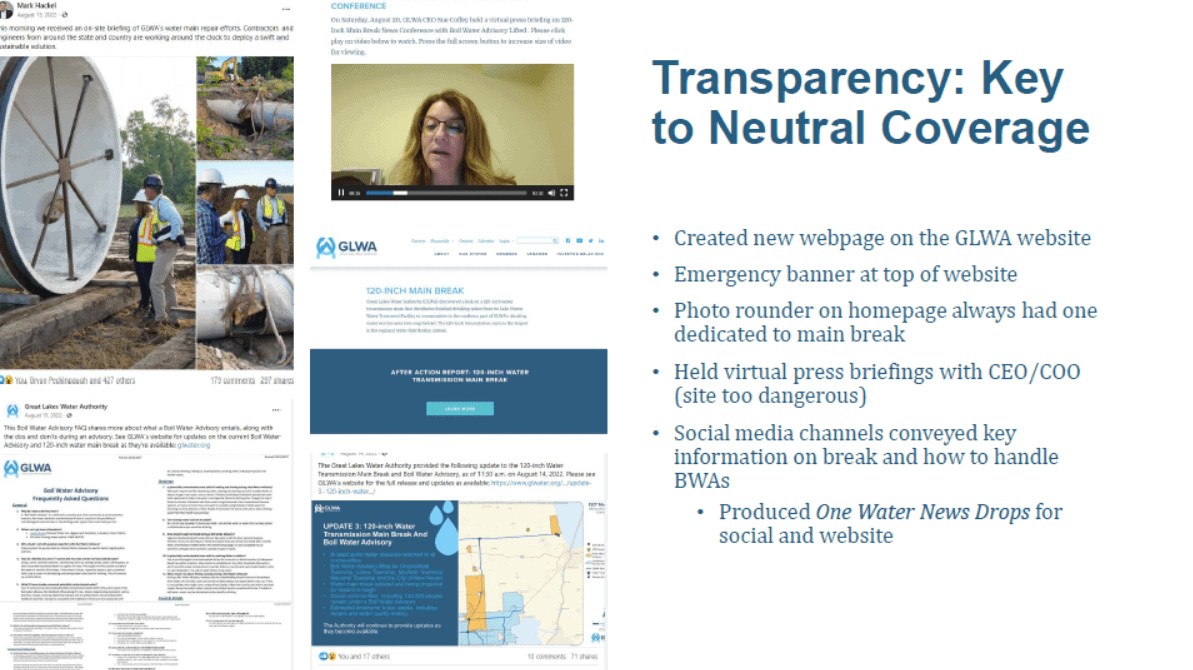
To establish consistency, clarity, and continuity of messaging, 22 numbered updates were shared. These included date, time, impact area maps, and pictures/videos. Updates focused on large and small repair milestones, both positive and negative, to achieve transparency.
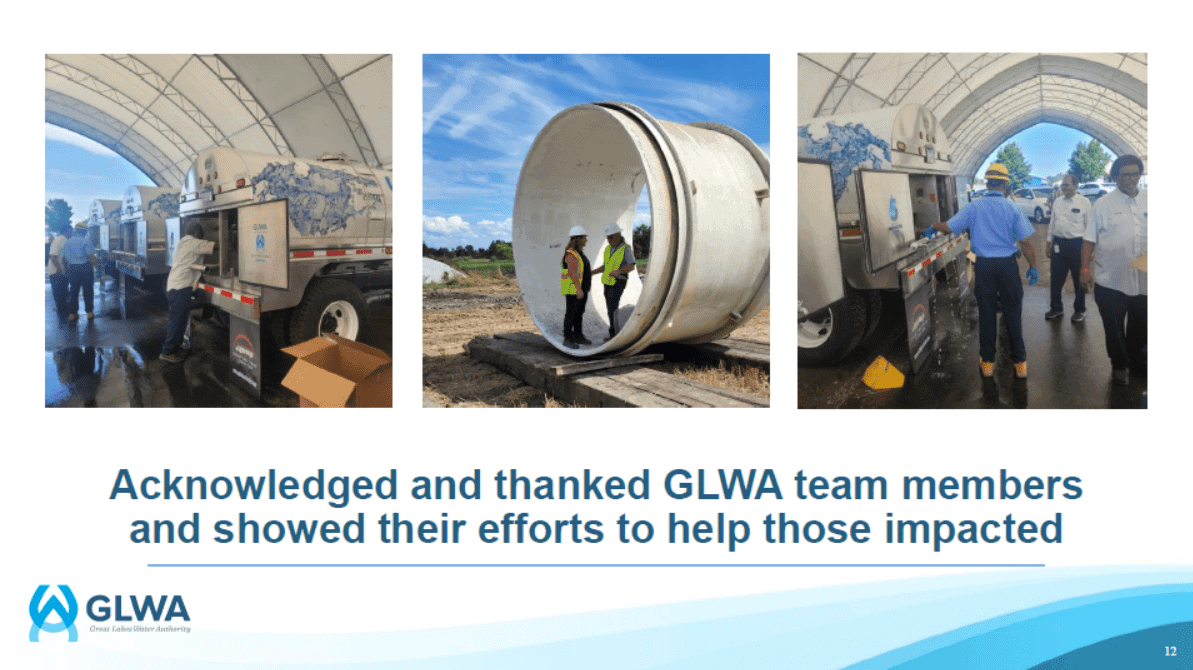
Michelle emphasized the importance of consistently acknowledging and thanking team members who contributed to the resolution of the repair, including those in the field and the emergency management team. By considering the needs of all stakeholders involved, GLWA successfully managed communication through an extended crisis. Thanks to GLWA’s organized, collaborative, and learning-focused approach, the process was honed along the way and will be used to inform future preparations.
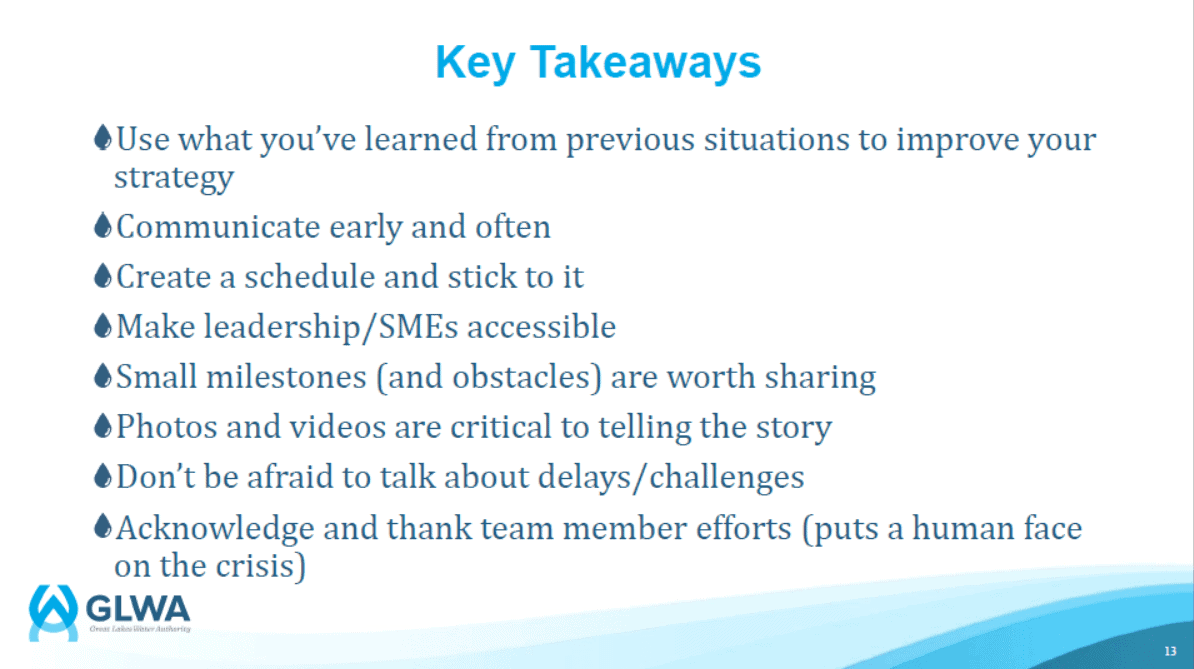
All the communications updates from the crisis have been cataloged on the GLWA webpage. Moving forward, GLWA is looking forward to continuing their work on the “Linear System Inspection Program” that “proactively assess GLWA’s water transmission mains and wastewater interceptor system and renew as necessary, to reduce the impacts of failures and increase reliability of our linear assets” (source: Great Lakes Water Authority, Interim CEO’s Report – May, 2022). This program is aimed at helping to identify vulnerable parts of the system for repair to help reduce incidents and service interruptions in the future. Be on the lookout for a new video this year that explains this process in-depth.
2022 Public Education Recap

Next, SEMCOG shared a quick recap of its public education activities, which were supported by our members and partners throughout the region in 2022. The Walk.Bike.Drive Safe (WBDS) campaign has shared messages every spring and fall since 2018, focused on transportation safety for all modes of travel. We were excited to work with a production team to emphasize the dangers of distracted driving and the importance of work zone area safety through our new video, “Everyone Home Safe“. In the last year, the program distributed 230+ educational bundles and accumulated over 17 million impressions through broadcast TV, Social media, and streaming. Stay tuned for 2023 content as we continue planning for the next campaign launch this spring.
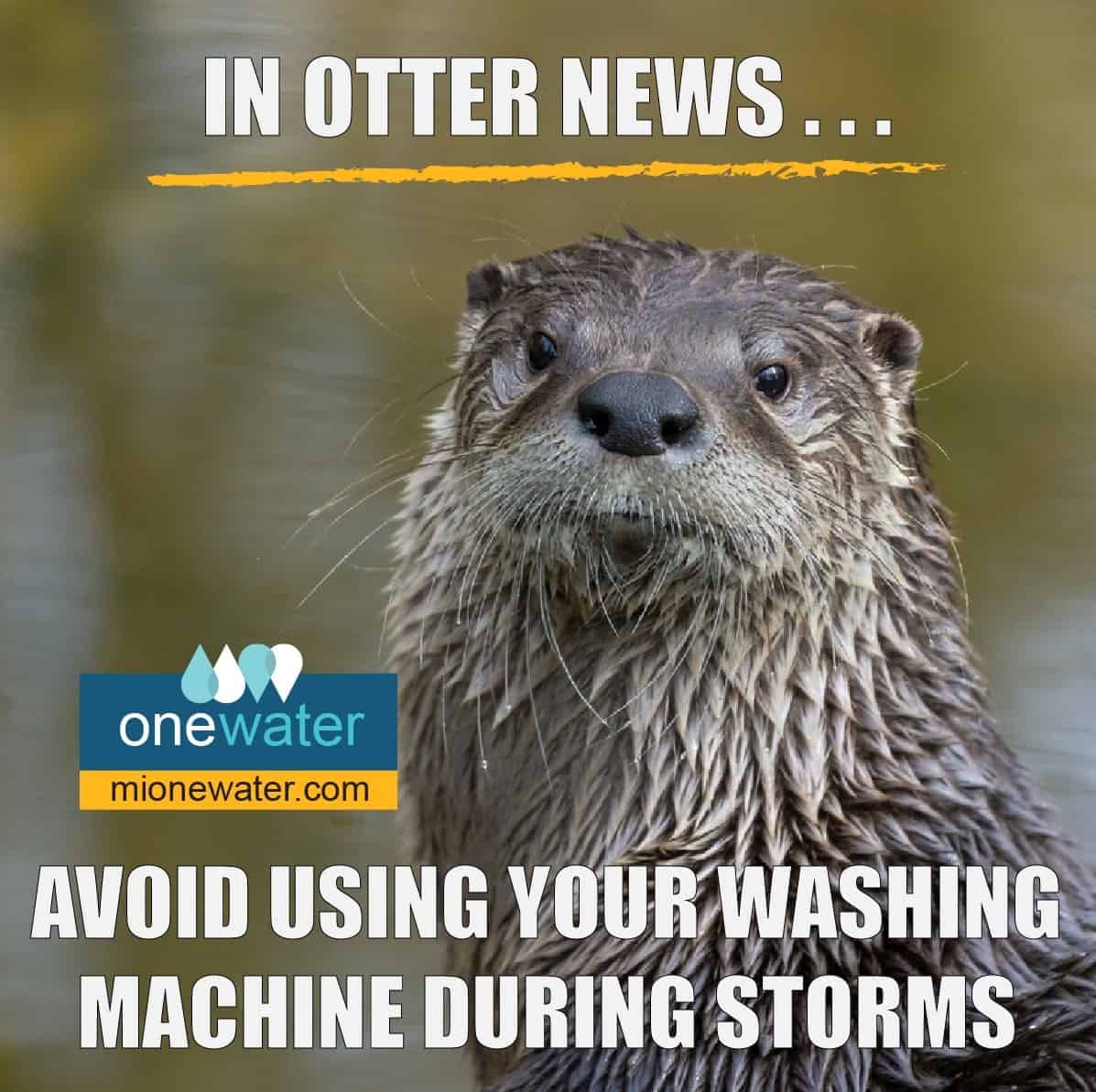
SEMCOG’s One Water campaign, focuses on stormwater, wastewater, and drinking water education. In 2022, SEMCOG emphasized severe flooding impact and tips for stormwater management while leaning on our regional leaders, including campaign founding partner GLWA. This past year, 100+ educational bundles were distributed and 16 million total impressions were achieved through the same channels as WBDS with the addition of radio.
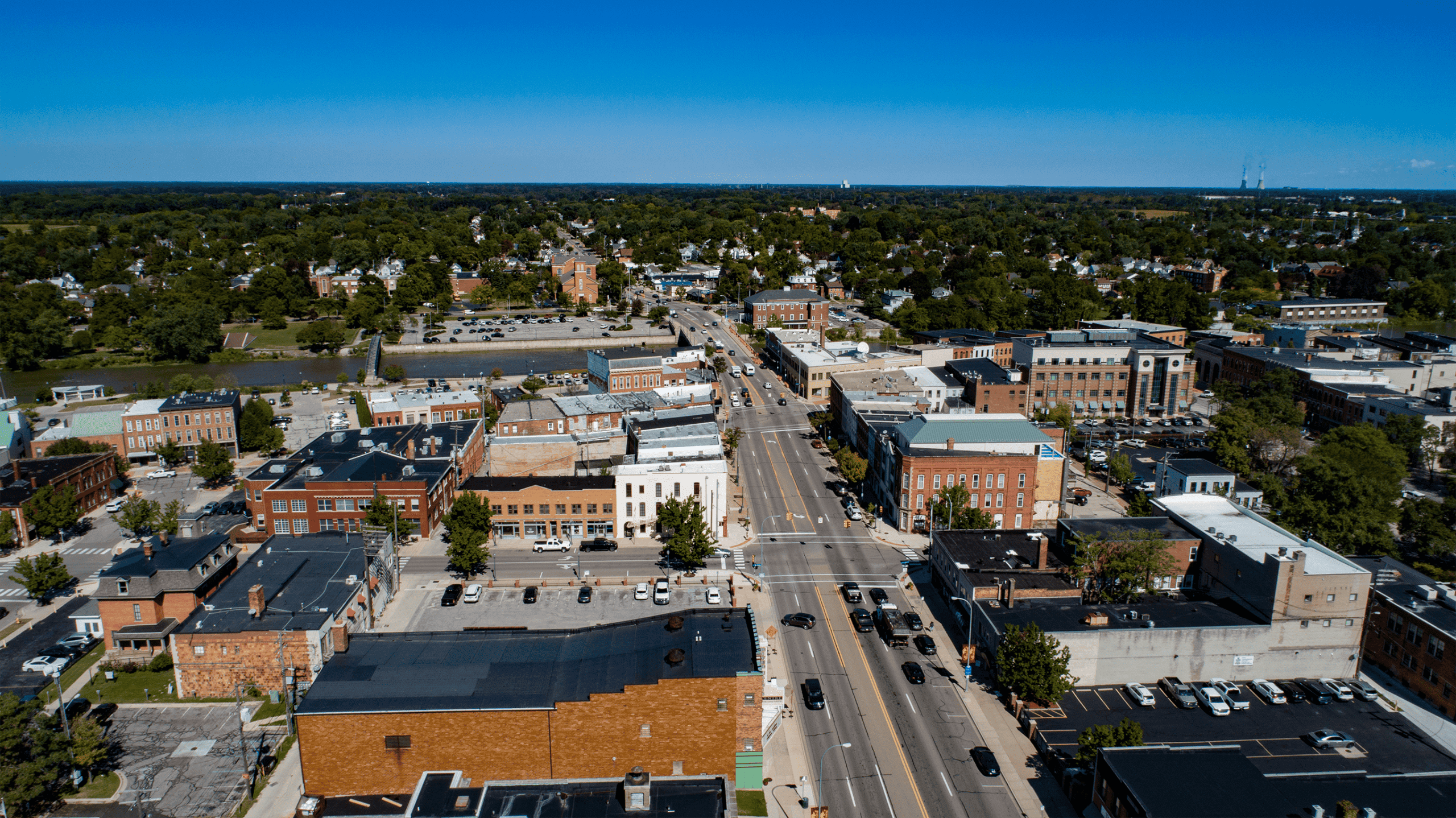
SEMCOG’s Shop Local initiative began during the pandemic as an effort to support local businesses and promote “new” ways of doing business such as online ordering and curbside pickup. Since then, SEMCOG has worked with member communities to produce 19 customized videos (and counting) focused on retail, dining, and entertainment experiences throughout Southeast Michigan. SEMCOG would like to thank all of the communities who have participated so far and their efforts in sharing these videos. While our Shop Local campaign is currently on pause for filming, please reach out to Jon Clark, Multimedia Specialist II, to schedule a time to meet and discuss a Shop Local video for your community in spring. Visit our Shop Local webpage for more information.
In 2023, SEMCOG is looking to expand on the success of Shop Local and broaden the initiative to more holistically tell the story of our region. “Experience Southeast Michigan” is the working title for this new approach. Sarah Traxler, SEMCOG’s Economic Development Coordinator, shared how this expansion will create opportunities to promote the attractive attributes of communities in Southeast Michigan. SEMCOG is responsible for preparing and implementing with our partners a five-year economic development strategy: Increasing Shared Prosperity for a Resilient Economy (link to plan).
Part of Increasing Shared Prosperity of a Resilient Economy is to focus on the region’s natural and cultural assets, commercial districts, emerging industry growth clusters, and places that generate community attachment. Another goal is to attract young professionals to bolster our workforce population through marketing our region as a wonderful place to work and live. Do you have ideas on how to capture innovative and unique places in Southeast Michigan? Does your community need assistance in promoting a unique aspect? Please let us know as we continue to develop plans for “Experience Southeast Michigan.”
Overall, we had great discussion during our meeting and are grateful to those who were able to attend and engage with us. Our next Communicators Network is on April 26. If you or someone on your team would like to receive updates about these meetings, contact Trevor Layton, SEMCOG Communications Manager. Additionally, please let us know if you have ideas for future meeting content or preferred ways of meeting by taking our brief survey.
Public Outreach Planning Meeting on February 16
Speaking of future meetings, SEMCOG is hosting a hybrid Public Participation Working Group meeting on Thursday, February 16 at 1 p.m. This is a meeting to discuss updates to SEMCOG’s Public Participation Plan, which guides public engagement and outreach for planning activities. Discussion will also focus on outreach and engagement for development of the 2050 Regional Transportation Plan. All Southeast Michigan Transportation System stakeholders are encouraged to attend, including community leaders, staff, residents, members of Southeast Michigan’s Transportation Coordination Council, and Communicators Network. We look forward to seeing you there!

Leave a Reply